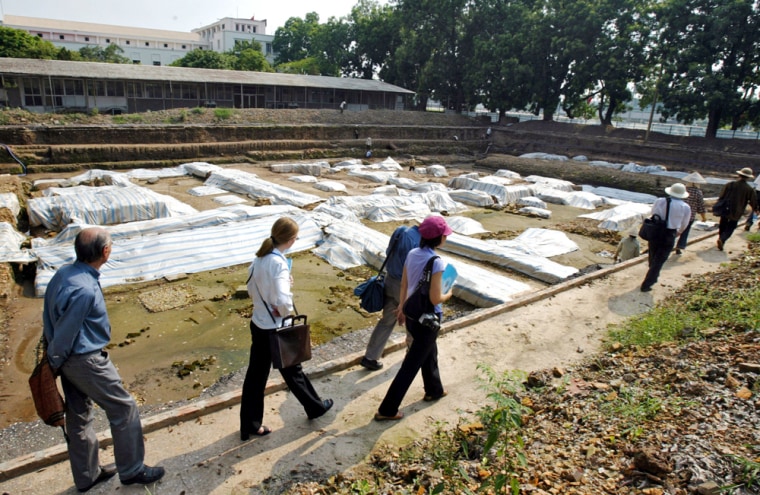Experts from Europe and Asia surveyed 1,400-year-old relics of an ancient citadel in Hanoi Tuesday and said they were concerned the priceless antiquities were at risk from exposure to the elements.
A pit covering more than one city block contains Vietnam’s most important historical site, dating back to the 7th century. There archaeologists discovered layers of different citadels built on top of each other, along with millions of artifacts, including bowls, vases, clay dragon heads and giant phoenixlike relics. Many were in near-perfect condition.
But archaeology and conservation experts worry that relics uncovered by recent excavations are now threatened by Vietnam’s tropical weather.
Burlap tarps now cover large segments of the site, and Vietnam is planning to begin constructing a roof next month. But the experts said that was not sufficient.
What is to be done?
To properly preserve the area, technicians would have to find a way to control air flow and humidity — no easy feat for such a large area, said Corrado Pedeli from the International Center for the Study of the Preservation and Restoration of Cultural Property in Italy.
“It’s very difficult find a solution, but we have to find something,” he said while surveying a room full of artifacts. “The problem is water and the climate. We are in the exact opposite conditions to realistically maintain a long-term (site).”
Japanese archaeologist Akira Yamanaka from Mie University said the Vietnamese government should quickly pass conservation laws and devote resources to preserving an area that symbolizes the country’s culture and history.
“It is a very important site,” he said. “If the Vietnamese government decided to invest more, many, many travelers would visit this site — especially Japanese.”
The heart of Hanoi
Vietnamese researchers have so far excavated 4.7 acres (1.9 hectares) and hope to receive government approval to uncover another 0.7 acres (2,830 square meters), said Bui Minh Tri from Vietnam’s Institute of Archaeology. The government has allocated about $2 million for the excavation, which began more than a year and a half ago.
The ruins are in the heart of Hanoi across from Ho Chi Minh’s mausoleum.
Archaeologists had long suspected the site existed. But wars and economic hardship kept them from exploring it until the government granted approval to clear the land and search for the ruins on a site where a new National Assembly Hall was slated to be built. A new site for the hall has since been selected.
